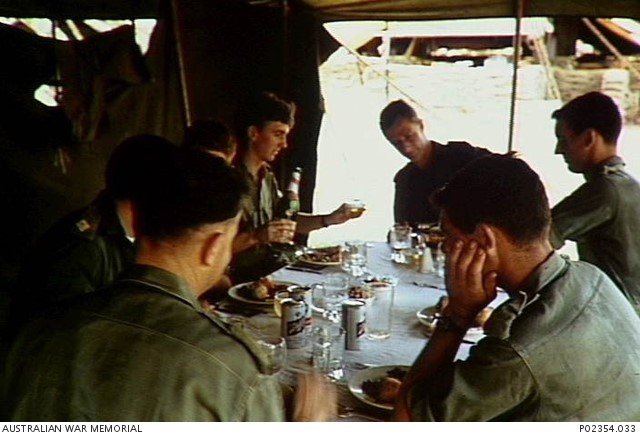‘The Mess is not the building or facility, rather it is the manifestation of an underlying philosophy in which military personnel of similar roles and authority come together and create a sense of belonging with their respective peers in Units and Formations.' (COMD FORCOMD Directive 02/17- Officer/SNCO Mess Policy)
I have often sat at the back of a packed Robertson Barracks Officer’s Mess (RBOM) general meeting and have had two emotions running. Firstly, I’ve felt sorry for the poor buggers on the Mess committee – especially the treasurer – as they try to accommodate the wants of hundreds of financially invested but emotionally detached members. With a membership spread across (at least) seven major units and a number of minor ones, the task is Herculean. The second emotion is that of envy. Envious that I wasn’t fortunate to serve in that mythical golden age of ‘unit messes’. Also envious of those minority units which still have access to that experience. (This Cove article: An Essay on the Operational Imperative of Messes offers an example at 16 Regt). In the age of Brexit, Catalan separatism and Scottish independence, could we improve on the current system by devolving mess membership to units and re-establishing unit messes?
Before the shrieks of 'There’s no money for that!' take over- I get it and I know. Unit messes were centralised as a cost-cutting measure. Although the catering was centralised, the amalgamation of unit mess committees on large bases was an unnecessary accompaniment. While units must share a mess building, it does not mean they need to share a mess committee.
The Cove hosts an extensive collection of articles on the importance of messes, that ground is well trod. The importance of messes is centred on the unique military culture they generate; by fostering camaraderie, esprit-de corps and learning. Achieving this across hundreds of members from disparate units is challenging, if not impossible. In my personal 'hierarchy of belonging', I outwardly identify as a member of my sub-unit, unit, brigade, corps and then Service. Membership of an area mess is difficult to reconcile with this hierarchy; it lacks the unique traits of identity upon which the Army’s gentle tribalism is founded. Membership of a unit mess would serve to build upon and strengthen an identity that already exists in the Army’s fabric.
So, how would this work? Centralised Mess Committees would be dissolved, and each unit would establish their own mess committees and adopt their own constitution (a generic ‘Army endorsed’ constitution could kick-start this process). Unit messes would then be responsible for managing their own funds, organising social functions tailored to their calendar and generating PME specific to that unit. The distinction between mess membership and the existing infrastructure could be handled in the following ways:
- The centralised mess buildings would remain and catering would remain centralised, as would the bar.
- The proceeds from bar profits would be dispersed between the subscribing committees on a per capita member basis.
- If mess property is of unique value to a unit, it will be allocated to that unit. Otherwise, all generic mess property can be passed to E&IG’s custody.
- Morno’s and coffee machines – the two key positives of area messes can remain. Coffee machines and Morno’s can be funded by a per capita membership subscription paid for by each mess committee. The responsibility for organising morno’s can pass between each unit mess committee annually.
- The centralised mess facility can remain as an option to be utilised for formal events or social functions.
- Centralised newspaper, TV and Wi-Fi subscriptions can be abolished. (Newspaper and Wi-Fi services do not reflect the ubiquitous access to internet enjoyed by every smartphone owning Officer or SNCO. TV subscriptions do not represent value for the majority of mess members who live off-base.)
What will this achieve? It may facilitate members becoming more than just financially involved in their Mess. Membership of a unit mess will provide some formality to already strong social and professional links. It will give units freedom in how they run their Mess. They can set mess fees and decide on what services they want to provide and how they expend their own funds. This will facilitate a membership that is tailored to each unit’s culture, calendar and membership demographics. By re-combining mess membership with unit identity, it should encourage mess members to become more involved in the organisation of their unit mess; certainly more than the current lackadaisical detachment felt in Darwin, Townsville and Brisbane.
The gold-plated solution to messing has flown the coop. However, structural changes remain a viable option to redress the perceived degradation of Mess culture. For me, the problem is simple, ‘area’ mess membership does not align with the existing Army identity structures. By devolving mess membership to units, we can empower members to create a tailored mess culture; one that is aligned with unit identities, roles, cultures and demographics.

In a tent that serves as the officers' mess for Carrier Squadron (1 Armoured Personnel Carrier) (1APC), officers from the unit eat a baked Christmas dinner.










As a former member, I find this disgraceful